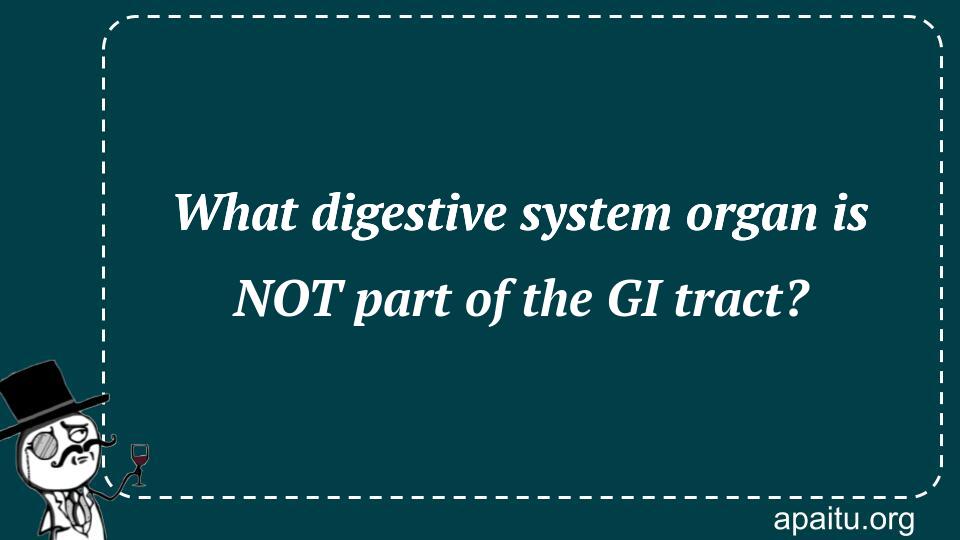Question
Here is the question : WHAT DIGESTIVE SYSTEM ORGAN IS NOT PART OF THE GI TRACT?
Option
Here is the option for the question :
- Esophagus
- Gallbladder
- Stomach
- Small intestine
The Answer:
And, the answer for the the question is :
Explanation:
The GI (gastrointestinal tract) and biliary systems are two subsystems of the digestive system. The GI tract is a network of hollow organs that aid in digestion and nutrient absorption. The mouth, esophagus, stomach, small and large intestines, and anus are among these organs.

Demystifying the Digestive System: The Exclusion of the Gallbladder from the GI Tract
The digestive system is a complex and intricate network of organs and structures that work together to break down food, extract nutrients, and eliminate waste from the body. When we think of the digestive system, we often envision a series of organs forming the gastrointestinal (GI) tract. However, there is one organ that stands apart from this tract, and that is the gallbladder. In this article, we will explore the gallbladder’s role in digestion and understand why it is not considered part of the GI tract.
To understand the exclusion of the gallbladder from the GI tract, let’s first take a closer look at the digestive system as a whole. The GI tract, also known as the alimentary canal, is a continuous tube-like structure that extends from the mouth to the anus. It includes organs such as the mouth, esophagus, stomach, small intestine, and large intestine. These organs are responsible for the physical and chemical breakdown of food and the absorption of nutrients.
However, the gallbladder, an organ nestled beneath the liver, is not part of this elongated tube. Instead, it serves as a storage and concentration reservoir for bile, a substance produced by the liver. Bile plays a crucial role in the digestion and absorption of fats. It aids in the emulsification and breakdown of dietary fats into smaller droplets, allowing for better digestion and absorption in the small intestine.
When we consume a fatty meal, the gallbladder contracts and releases concentrated bile into the small intestine through a small duct called the common bile duct. This bile helps in the breakdown of fats into fatty acids and glycerol, which can then be absorbed by the intestinal lining. By storing and concentrating bile, the gallbladder ensures that an adequate amount is readily available for digestion when needed.
So, why is the gallbladder not considered part of the GI tract? The key lies in its function. While the gallbladder contributes to the process of digestion, it does not directly participate in the physical breakdown of food or the absorption of nutrients. Its role is primarily focused on the storage and release of bile, which aids in the digestion of fats. Therefore, it is classified as an accessory organ of the digestive system rather than a part of the GI tract.
It is worth noting that although the gallbladder is not part of the GI tract, it is closely connected to the system. The gallbladder receives bile from the liver via the hepatic ducts and releases it into the small intestine through the common bile duct. This connection ensures the seamless coordination of bile production, storage, and release to facilitate efficient digestion.
the gallbladder plays a crucial role in the digestive system by storing and concentrating bile, which aids in the digestion and absorption of fats. While it is intimately connected to the GI tract, it is not considered part of the tract itself. Its function as an accessory organ, focused on bile storage and release rather than direct digestion, sets it apart from the organs within the GI tract. Understanding the specific role of the gallbladder enhances our comprehension of the digestive process and highlights the intricate nature of the digestive system as a whole.